Edmonton Manual: AN APPROACH TO OSCE 6th Edition
Edmonton Manual: AN APPROACH TO OSCE 6th Edition
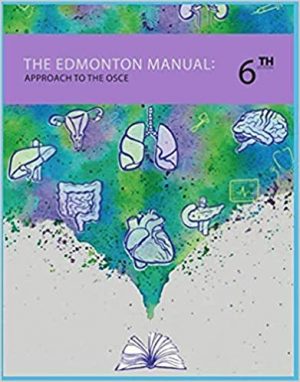
Edmonton Manual: AN APPROACH TO OSCE 6th Edition
DOWNLOAD THIS BOOK
Medical Books Library for Doctors, Physicians, Surgeons, Dentists, Intensivists, Physician Assistants, Nurses, Medical Technicians and Medical Students
Medical books library


Edmonton Manual: AN APPROACH TO OSCE 6th Edition
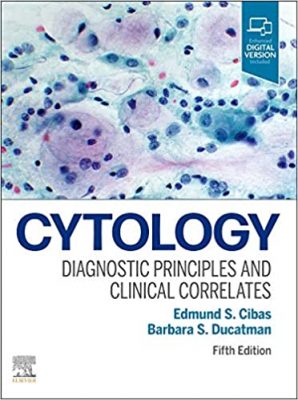
This comprehensive medical book, Cytology: Diagnostic Principles and Clinical Correlates is a practical guide to the diagnostic interpretation of virtually any cytological specimen you may encounter. This highly useful bench manual covers all organ systems and situations in which cytology is used, including gynecologic, non-gynecologic, and FNA samples, with an in-depth differential diagnosis discussion for all major entities. As with previous editions, the revised 5th Edition focuses on practical issues in diagnosis and the use of cytology in clinical care, making it ideal for both trainee and practicing pathologists.
Includes coverage of patient management in discussions of pertinent clinical features and emphasizes clinical correlation throughout.
Examines the role of immunohistochemistry, flow cytometry, and molecular biology in resolving difficulties in interpretation and diagnosis.
Features more than 550 full-color illustrations that provide a real-life perspective of a full range of cytologic findings.
Discusses hot topics such as new diagnostic biomarkers and their utility in differential diagnosis, the latest Bethesda System classifications/terminology, new techniques, and new adjunct tests.
Provides an in-depth analysis of common diagnostic pitfalls to assist with daily sign-out and reporting.
Includes a video on how to perform fine needle aspiration biopsy, from the patient interview and precautions to demonstration of techniques.
Enhanced eBook version included with purchase. Your enhanced eBook allows you to access all of the text, figures, and references from the book on a variety of devices.
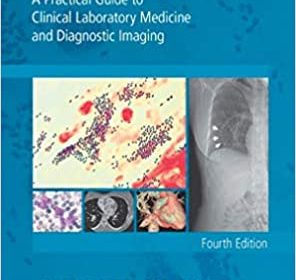
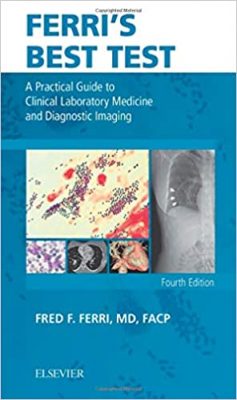
Ferri’s Best Test 4th Edition
Practical and concise, this spiral bound, pocket-sized manual is a quick, go-to reference for up-to-date clinical material on today’s diagnostic testing and laboratory tests. Three convenient sections provide quick access to key information on clinical laboratory testing, diagnostic imaging, and diagnostic algorithms. Experienced author Dr. Fred Ferri uses a unique, easy-to-follow format to simplify complex information and help you choose the best test to supplement your clinical diagnostic skills.
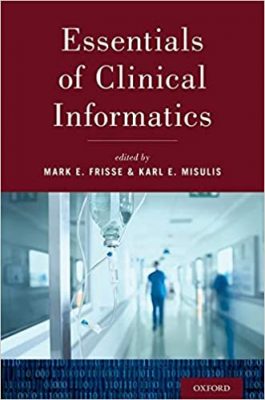
Essentials of Clinical Informatics Illustrated Edition
Essentials of Clinical Informatics provides a concise and user-friendly overview on important topics such as technical infrastructure, team members and their roles, informatics methods, policies and laws, implementation, and operations. With increased interest in training and expertise in
order to participate in all aspects of medical technology from basic function of electronic health record to data analytics and quality improvement to population health, this work serves as a foundational guide to better understand and analyze medical data.
FOR MORE BOOKS AND TUTORIALS VISIT EDOWNLOADS.ME
The book is separated into six parts: Part 1, “Areas of Focus”, is an introduction to the healthcare system and healthcare information systems; Part 2, “The Framework”, discusses the theoretical and procedural infrastructure of informatics, including data, knowledge, people, policies, procedures,
and regulations; Part 3, “The Foundation”, covers the fundamentals of clinical informatics in detail, including data representation, computer science, logic and programming, decision-making and decision support, analytics, user experience, and project management; Part 4, “Application of Informatics
in Healthcare”, looks at the roles of informatics in the spectrum of healthcare environments from home to hospital to population health; Part 5, “Future Trends’, presents a view of future trends and methods to stay current; and Part 6, “Appendix”, has reference data, glossary, case discussions,
citations, recommendations for further reading, and self-assessment questions which may be of interest to professionals who are preparing for certification examinations.
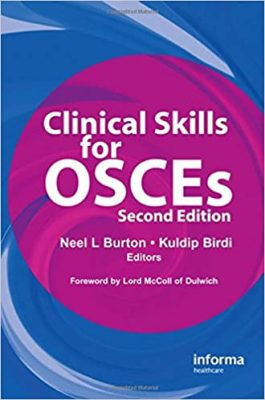
Clinical Skills for OSCEs 2nd Edition
This Second Edition of the highly popular Clinical Skills for OSCEs is the most comprehensive guide to basic clinical skills available, covering all the pertinent skills taught at medical school, from third year to finals. With its clear and concise, yet informative style, Clinical Skills for OSCEs, Second Edition is the ideal revision tool for all exam candidates preparing for their OSCE or PLAB exams.
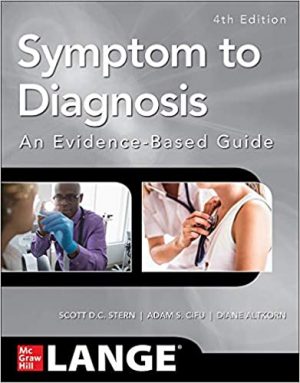
Symptom to Diagnosis An Evidence Based Guide, Fourth Edition
Symptom to Diagnosis, Fourth Edition teaches an evidence-based, step-by-step process for evaluating, diagnosing, and treating patients based on their clinical complaints. By applying this process clinicians will be able to recognize specific diseases and prescribe the most effective therapy.
Each chapter is built around a common patient complaint that illustrates essential concepts and provides insight into the process by which the differential diagnosis is identified. As the case progresses, clinical reasoning is explained in detail. The differential diagnosis for that particular case is summarized in tables that highlight the clinical clues and important tests for the leading diagnostic hypothesis and alternative diagnostic hypotheses. As the chapter progresses, the pertinent diseases are reviewed. Just as in real life, the case unfolds in a stepwise fashion as tests are performed and diagnoses are confirmed or refuted.
Completely updated to reflect the latest research in clinical medicine, this fourth edition is enhanced by algorithms, summary tables, questions that direct evaluation, and an examination of recently developed diagnostic tools and guidelines. Clinical pearls are featured in every chapter. Coverage for each disease includes: Textbook Presentation, Disease Highlights, Evidence-Based Diagnosis, and Treatment.
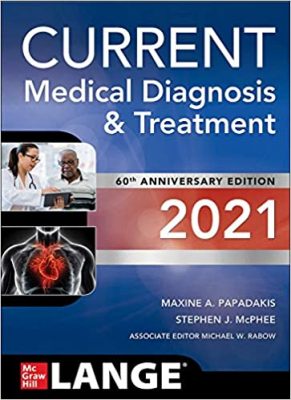
For 60 years, CURRENT Medical Diagnosis and Treatment―the flagship volume of the renowned Lange medical series―has been delivering the authoritative information students, residents, and clinicians need to build their medical knowledge, expertise, and confidence. Covering the latest clinical developments in all facets of medicine and fully focused on bedside clinical issues, this new edition provides completely the latest guidelines, reference, drug prices, approved drugs, and evidence-based coverage of more than 1,000 diseases and disorders―all formatted to enable you to find the answers you need quickly and effortlessly.
FOR MORE BOOKS AND TUTORIALS VISIT EDOWNLOADS.ME
This landmark guide covers inpatient and outpatient care, focusing on the diagnostic tools relevant to daily practice, and reviews all primary care topics, including gynecology/obstetrics, dermatology, ophthalmology, geriatrics, preventive medicine, psychiatry, and neurology. Now includes a “year in review” feature highlighting what’s new in CMDT!
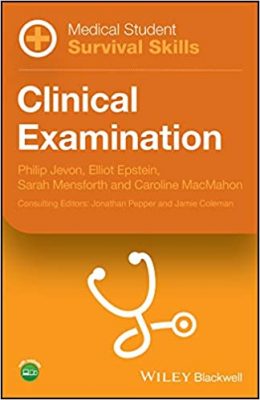
Medical students encounter many challenges on their path to success, from managing their time, applying theory to practice, and passing exams. The Medical Student Survival Skills series helps medical students navigate core subjects of the curriculum, providing accessible, short reference guides for OSCE preparation and hospital placements. These guides are the perfect tool for achieving clinical success.
FOR MORE BOOKS AND TUTORIALS VISIT EDOWNLOADS.ME
Medical Student Survival Skills: Clinical Examination provides step-by-step guidance on the physical evaluation of the body and its functions. This portable and concise guide leads readers through each component of a clinical examination, including cardiovascular, respiratory, gastrointestinal and peripheral arterial and venous system exams. OSCE key learning points, exam preparation lists, practical tips, website access for videos and OSCE checklists help medical students and junior doctors efficiently perform a clinical examination.
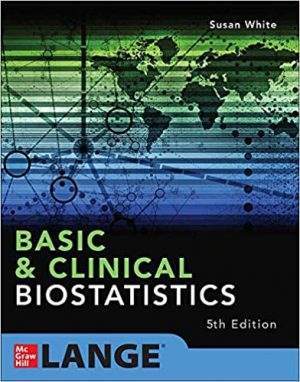
Basic & Clinical Biostatistics 5th Edition
Basic & Clinical Biostatistics provides medical students, researchers, and practitioners with the knowledge needed to develop sound judgment about data applicable to clinical care. This fifth edition has been updated throughout to deliver a comprehensive, timely introduction to biostatistics and epidemiology as applied to medicine, clinical practice, and research. Particular emphasis is on study design and interpretation of results of research.
The book features “Presenting Problems” drawn from studies published in the medical literature, end-of-chapter exercises, and a reorganization of content to reflect the way investigators ask research questions. To facilitate learning, each chapter contain a set of key concepts underscoring the important ideas discussed.
Features:
• Key components include a chapter on survey research and expanded discussion
of logistic regression, the Cox model, and other multivariate statistical methods
• Extensive examples illustrate statistical methods and design issues
• Updated examples using R, an open source statistical software package
• Expanded coverage of data visualization, including content on visual perception
and discussion of tools such as Tableau, Qlik and MS Power BI
• Sampling and power calculations imbedded with discussion of the statistical model
• Updated content, examples, and data sets throughout
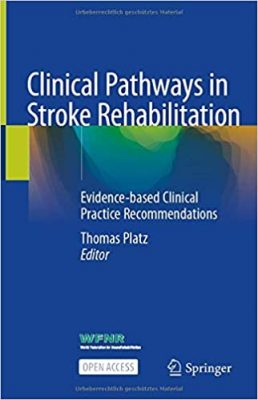
Clinical Pathways in Stroke Rehabilitation
This open access book focuses on practical clinical problems that are frequently encountered in stroke rehabilitation. Consequences of diseases, e.g. impairments and activity limitations, are addressed in rehabilitation with the overall goal to reduce disability and promote participation. Based on the available best external evidence, clinical pathways are described for stroke rehabilitation bridging the gap between clinical evidence and clinical decision-making. The clinical pathways answer the questions which rehabilitation treatment options are beneficial to overcome specific impairment constellations and activity limitations and are well acceptable to stroke survivors, as well as when and in which settings to provide rehabilitation over the course of recovery post stroke.
FOR MORE MEDICAL BOOKS VISIT EDOWNLOADS.ME
Each chapter starts with a description of the clinical problem encountered. This is followed by a systematic, but concise review of the evidence (RCTs, systematic reviews and meta-analyses) that is relevant for clinical decision-making, and comments on assessment, therapy (training, technology, medication), and the use of technical aids as appropriate. Based on these summaries, clinical algorithms / pathways are provided and the main clinical-decision situations are portrayed.
The book is invaluable for all neurorehabilitation team members, clinicians, nurses, and therapists in neurology, physical medicine and rehabilitation, and related fields. It is a World Federation for NeuroRehabilitation (WFNR) educational initiative, bridging the gap between the rapidly expanding clinical research in stroke rehabilitation and clinical practice across societies and continents. It can be used for both clinical decision-making for individuals and as well as clinical background knowledge for stroke rehabilitation service development initiatives.